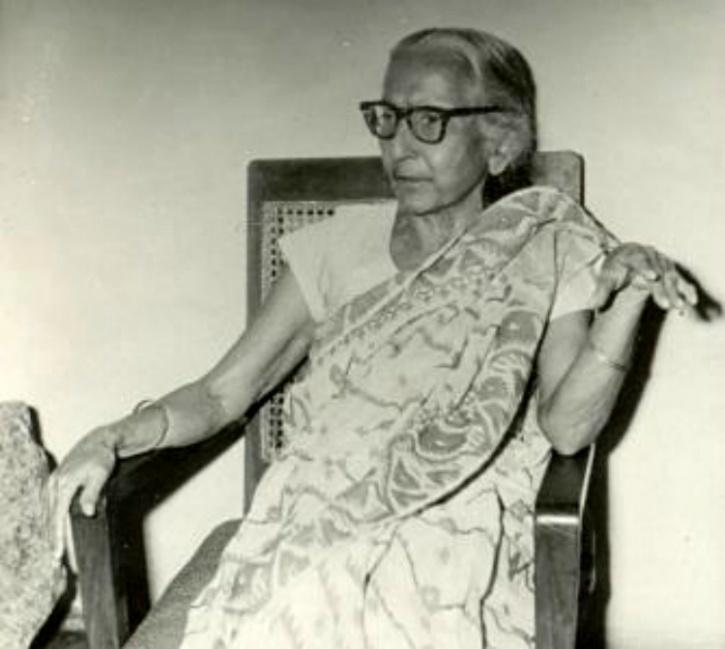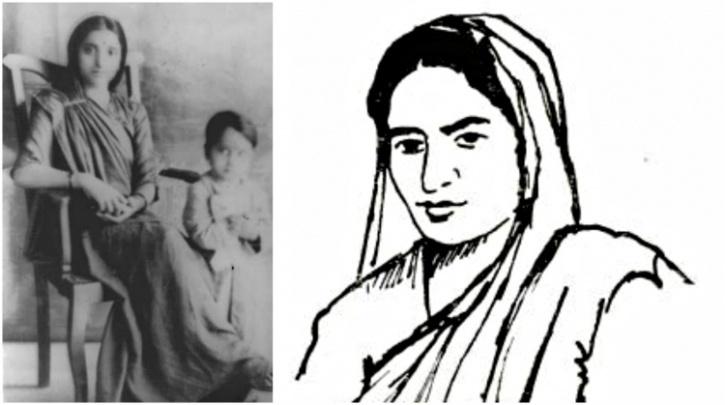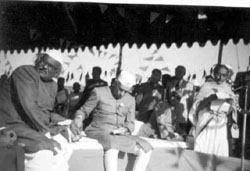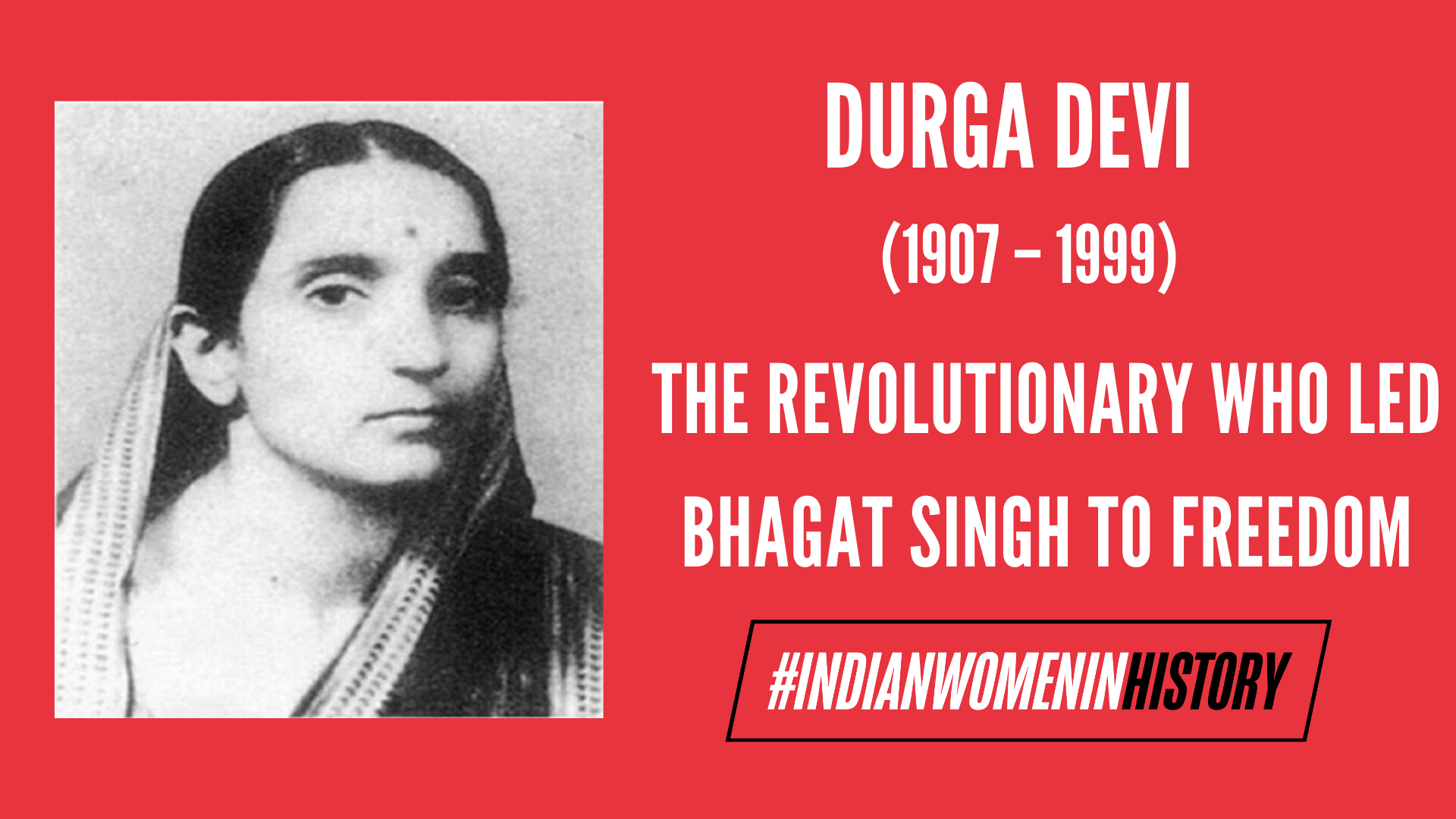Fondly called “Durga Bhabhi” in the revolutionaries circle of the Hindustan Socialist Republican Association (HSRA), Durga Devi was instrumental in the freedom struggle against British imperialism. She worked at par with revolutionaries like Bhagat Singh, Sukhdev Thapar, Chandrashekhar Azad and other members of HSRA. Her story inspires in us bravery, courage and a silent determination to fight with dignity and valour. Like many women revolutionaries of her time, Durga Devi fought not only to repel the autocratic government from her homeland but shape the route to women’s participation in the freedom struggle.
Early Life
Durga Devi was born on 7th October 1907 to a Gujarati Brahmin couple who had settled in Allahabad. She grew up in the care of her aunt, after her mother’s demise and her father’s vow of renunciation or sanyas. She was married at a tender age of eleven to Bhagwati Charan Vohra. The significant happenings in her life began at the onset of her conjugal life.

The Making of a Revolutionary
Unlike many marriages of her time, Durga Devi was bestowed with a man who became her true compatriot. He was already inclined towards the freedom movement. Thus, Durga Devi came into contact with the revolutionaries of HRSA through her husband who was a member of the association. Her husband, Bhagawati Charan Vohra was a son of a wealthy Gujarati railway official. He studied at National College, Lahore where he met Bhagat Singh. Their acquaintance soon transformed into budding friendship and Singh, as well as other members of HSRA like Yashpal and Sukhdev, became regular visitors at his home.

Though introduced by her husband to HSRA, Durga Devi carved out her niche in the organisation and developed a permanent presence in revolutionary activities. She was one of the few women revolutionaries who actively participated in armed rebellion. After her membership in HSRA consolidated, Durga Devi joined other organisations like Naujawan Bharat Sabha, an auxiliary of HSRA. She rose to prominence when the organisation observed the 11th anniversary of Kartar Singh Sarabh’s martyrdom on 16th November 1928.
She wielded tremendous influence on members such as Bhagat Singh, Sukhdev, and Azad who fondly called her as “Durga Bhabhi”. Meticulous in planning, she was actively involved in mechanisations of HSRA. She along with her husband, helped Vimal Prasad Jain, a member of her association to run a bomb-making factory named ‘Himalaya Toilets’ in Delhi. She also led the funeral procession of Jatindra Nath Das from Lahore to Calcutta after his death in a 63-day hunger strike.
The Great Escape
We are well acquainted with the incident of Bhagat Singh’s assassination of JP Saunders on 19th December, 1928. But what most of us are unaware of is how Bhagat Singh managed to escape the frenzied manhunt of an entire British force. The story of his great escape is inextricably connected to the goodwill and courage of Durga Devi. Before leaving for Calcutta, Bhagawati Charan left Durga Devi in possession of a hefty sum of emergency money. This came handy when Bhagat Singh, Sukhdev, and Rajguru visited Durga Devi for assistance in escaping Lahore. She readily agreed to extend her full assistance.
Bhagat Singh disguised himself by cutting his hair short and dressing in western attire. To complete the disguise he needed Durga Devi to pose as his wife. She agreed not only to accompany him but without hesitation gave away the emergency sum of money to the trio. Her approval is a mark of significance as it broke away from the norms of established social etiquette of her era.

She took her infant son Sachinanda Vohra and escorted Bhagat Singh as her husband right under the nose of the British intelligentsia. Rajguru was dressed in the attire of a servant. The couple boarded the first-class carriage of the train to Calcutta while their servant after handing over the luggage boarded the third-class carriage. Thus, they escaped from Lahore unnoticed from the police cordon patrolling the station. One can wonder would Bhagat Singh have been able to live to achieve his next feat on the fateful day of 1929 if not for Durga Devi.
After the Great Escape
The story of Durga Devi never halted after the fateful journey she took with her comrade. If anything, she became more actively involved in daring acts of armed rebellion. After reaching Calcutta the disguised couple met Bhagwati Charan Vohra. It is accounted that Bhagawati Charan was elated to hear about the role of Durga Devi in Bhagat Singh’s safe arrival at Calcutta.
In Calcutta, the group of revolutionaries learned to manufacture bombs. This knowledge was employed in the making of the bomb that exploded on 8th April 1929 in the Central Assembly in Delhi. This was the last daring act of Bhagat Singh and BK Dutt after which they were arrested and sentenced to death. The news angered Durga Devi beyond measure. The event triggered the authorities to take notice of the revolutionaries of HSRA. There were several unwarranted house raids and many revolutionaries started absconding.

In these tensed times, Durga Devi received letters for fugitive revolutionaries. She also involved herself in procuring weapons for the association. An interesting anecdote states that the then editor of the Hindustan Times, JN Shani ‘saw her in a secret meeting in Delhi with pistols sourced from the North-Western Frontier Province, which she kept concealed under her clothes.’ Her audacious act was performed on 8th October 1930 when she along with two other accomplices, shot at a European couple outside the police station in Lamington Road. They intended to display their outrage at the death sentence accorded to Bhagat Singh, Sukhdev, and Rajguru on 7th October 1930.
Also read: Nagammai: The Fearless But Forgotten Feminist Activist | #IndianWomenInHistory
The European couple escaped their assassination attempt with minor injuries. But this led to a general furor amongst the authorities. She was arrested and awarded three years in prison. Later this event was interpreted as “the first instance in which a woman figured prominently in a terrorist outrage.” She actively campaigned for the release of Bhagat Singh by writing petitions, raising funds for the appeal, and meeting important dignitaries like Gandhi in 1931.
Later Life
Durga Devi became widowed at a young age in a tragic incident when Bhagawati Charan died of premature explosion while testing a bomb made to free Bhagat Singh from jail. Deeply impacted by this, she left Lahore and was continuously on the move. Later, she got involved with Congress politics and served as president of the Delhi Congress Committee in 1937-38. Durga Devi withdrew from active politics and in 1940, she withdrew from public life. She immersed herself in furthering education and was known to be the founder of a school in Lucknow, now known as City Montessori School. The school was visited by Prime Minister Jawaharlal Nehru in 1956. She lived her life in quiet anonymity in Ghaziabad after independence. Durga Devi died on 15th October 1999 at the age of 92.

The Power To Wield Revolution Is Not Gender Unique
In anecdotes, fables and popular representation of freedom struggle we tend to singularly popularise the role of male revolutionaries. Their daring acts fill us with pride and devotion. But what remain absent in these accounts are the brave women who laid down their lives by embracing the role of revolutionaries; their activities relegated not only to armed rebellions but sacrifices in the face of utmost danger and British aggression. Pritilata Waddedar, Matangini Hazra, Lakshmi Sahgal, Aruna Asaf Ali and others are concrete examples of women who wielded the sword of freedom upon the colonial rulers. In no senses were their sacrifice and deeds less than their male counterparts.
Also read: Padmaja Naidu : The Longest Serving Female Governor | #IndianWomenInHistory
Defying the gender norms of their time that restricted their social mobility and constricted them in the gendered division of labour of affectionate mothers and dutiful wives, these brave women rebelled not only against the government but also patriarchal values at large. They have taught us the value of our self worth as women and the power they have to change the destiny of the nation.




